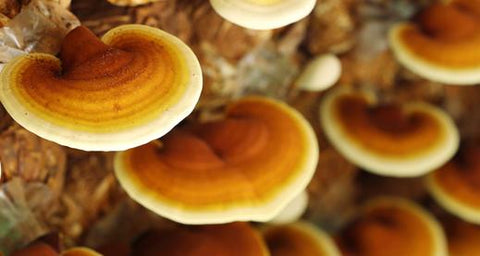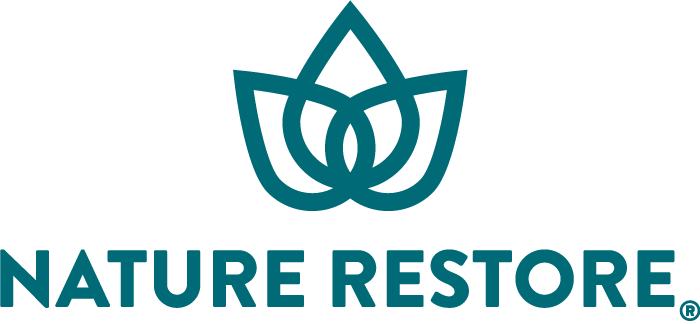
Where it began
Reishi has been used for thousands of years to heal, improve health, and promote general longevity. The use of this mushroom began with Chinese emperor Shen Nong, who tasted and cataloged over 365 plants to create the first book of Traditional Chinese Medicine (8). Each plant was evaluated on its treatment capabilities, effectiveness, and the possibility of side effects. This led red reishi mushroom to be classified as a "Superior" plant for medicinal use. Reishi has only increased in popularity since that time and is now one of the most widely used medicinal mushrooms (5).
Traditional Use
It is no question why Reishi has been referred to as the "Mushroom of Immortality". Throughout history, they have been used for liver problems, heart conditions, asthma, high blood pressure, arthritis, potential treatment for tumor growth, and even an effective skincare ingredient! (1, 5, 6, 7) Though the list is impressive, many of these claims tie back to the anti-inflammatory and immune-boosting properties of the fungus.
Anti- Inflammatory
Asthma, for example, is caused by an inflammation of the airways, as well as bronchitis being an inflammation of the bronchial tubes in the lungs (9). Arthritis again is an inflammation of the joints. Reishi has shown beneficial to these ailments because of decreased inflammation.
Skincare
Skin-soothing is also linked to inflammation. Reishi has been used to heal, calm, and reduce redness in the skin because of this property (10). It has also been shown to have skin lightening capabilities as it has been shown to inhibit tyrosinase, which is the enzyme responsible for the production of dark spots (3). Because of this, the main skincare claims to reishi are calming and brightening the skin.
Blood Pressure
Reishi’s most notable behavior, besides the inflammation assist, is its ability to potentially lower blood pressure. This leads to improved circulation and decreased risk of heart disease. The main goal when treating chronic high blood pressure or hypertension is to bring blood pressure back into a normal range (5). Most studies agree that reishi mushroom can help to increase blood flow, but some expand to lowered cholesterol, increased white blood cell count, and overall better circulation through the heart (1, 5, 7).
Sleep
If that isn't enough, reishi also has sleep boosting abilities. Chinese and Japanese herbalists have been using this mushroom to treat insomnia for centuries (2, 5). Some have found that this sleep promotion is due to a reduction in stress-related to sleep quality, others observe a calming effect on the central nervous system helping to relax the muscles and ease the transition into sleep(2, 5, 7). Either way, Reishi has shown to help with the preliminary stages of sleep but has no notable effect on the quality of sleep or the REM cycle (4). Reishi is a good place to start for those that have trouble falling asleep but do not have problems with sleep quality but can be combined with another sleep aid like Wulinshen mushroom that could lead to deeper more restful sleep.
Overall, through the listed studies, reishi has been found to decrease inflammation, improve blood flow, and can be a useful sleep aid. As always please consult a physician if considering the use of Reishi Supplements and if you have any pre-existing conditions.
References
Ansor, N. M., Abdullah, N., & Aminudin, N. (2013). Anti-angiotensin converting enzyme (ACE) proteins from mycelia of Ganoderma lucidum (Curtis) P. Karst. BMC Complementary and Alternative Medicine,13(1). doi:10.1186/1472-6882-13-256
Babu, P. D., & Subhasree, R. S. (2008). The Sacred Mushroom “Reishi”-A Review. American-Eurasian Journal of Botany,1(3), 107-110.
Chien, C., Tsai, M., Chen, C., Chang, S., & Tseng, C. (2008). Effects on Tyrosinase Activity by the Extracts of Ganoderma lucidum and Related Mushrooms. Mycopathologia,166(2), 117-120. doi:10.1007/s11046-008-9128-x
Chu, Q., Wang, L., Cui, X., Fu, H., Lin, Z., Lin, S., & Zhang, Y. (2007). Extract of Ganoderma lucidum potentiates pentobarbital-induced sleep via a GABAergic mechanism. Pharmacology Biochemistry and Behavior,86(4), 693-698. doi:10.1016/j.pbb.2007.02.015
Dupler, D., & Frey, R. J. (2005). Reishi Mushroom. In J. L. Longe (Ed.), The Gale Encyclopedia of Alternative Medicine (2nd ed., Vol. 3, pp. 1721-1723). Detroit: Gale.
Gao, P., Hirano, T., Chen, Z., Yasuhara, T., Nakata, Y., & Sugimoto, A. (2012). Isolation and identification of C-19 fatty acids with anti-tumor activity from the spores of Ganoderma lucidum (reishi mushroom). Fitoterapia,83(3), 490-499. doi:10.1016/j.fitote.2011.12.014
Guide to Reishi Mushrooms. (n.d.). Retrieved from http://www.reishi.com/what-is-reishi.htm
Nature’s most powerful adaptogen: History. (n.d.). Retrieved from https://mikei.ca/en/history.html
Pi, C., Wang, H., Lu, C., Lu, F., & Chen, C. (2014). Ganoderma formosanum polysaccharides attenuate Th2 inflammation and airway hyperresponsiveness in a murine model of allergic asthma. SpringerPlus,3(1), 297. doi:10.1186/2193-1801-3-297
Zeng, Q., Zhou, F., Lei, L., Chen, J., Lu, J., Zhou, J., . . . Huang, J. (2016). Ganoderma lucidum polysaccharides protect fibroblasts against UVB-induced photoaging. Molecular Medicine Reports,15(1), 111-116. doi:10.3892/mmr.2016.6026






